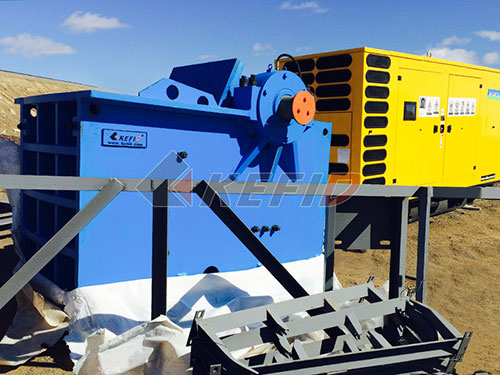Mill Crushers: The Essential Engines of Material Processing

Across countless industries, from mining and construction to agriculture and recycling, the transformation of raw, bulky materials into usable sizes is a fundamental requirement. At the heart of this critical size reduction process lies a workhorse technology: the Mill Crusher. More than just brute force machines, modern mill crushers are sophisticated pieces of engineering designed for efficiency, reliability, and specific application needs.
The Core Mission: Size Reduction
The primary function of any mill crusher is unequivocal: to reduce large rocks, ores, aggregates, grains, or other solid materials into smaller, more manageable pieces or even fine powders. This process serves several vital purposes:
1. Liberation: In mining and mineral processing, crushing liberates valuable minerals from their surrounding waste rock (gangue), making subsequent separation processes like flotation or leaching possible.
2. Preparation for Further Processing: Crushed material often needs specific size ranges for downstream operations – whether it’s grinding into flour, creating uniform aggregates for concrete and asphalt, or preparing biomass for fuel.
3. Volume Reduction: Reducing particle size significantly decreases the volume of material for transport or storage.
4. Improving Reactivity: Smaller particles have a larger surface area relative to their volume, which can be crucial for chemical reactions (e.g., in cement production or fertilizer manufacturing).
5. Recycling: Crushing is essential in recycling streams to break down concrete rubble, glass bottles, electronic waste components (after disassembly), and plastics into reusable feedstock.
Diverse Mechanisms for Diverse Materials

The term “mill crusher” encompasses a wide array of machines employing different crushing principles tailored to material properties (hardness, abrasiveness, moisture content) and desired output size:
Jaw Crushers: The quintessential primary crusher. Utilizing two massive jaws – one fixed and one moving in an elliptical motion – they apply compressive force to break large rocks down. Ideal for hard and abrasive materials.
Gyratory Crushers: Similar in concept to jaw crushers but designed for very high capacity primary crushing stations in large mines and quarries. A gyrating mantle crushes material against a concave hopper.
Cone Crushers: Primarily used as secondary or tertiary crushers after jaw or gyratory units. Material is crushed between an eccentrically gyrating cone (mantle) and a stationary concave bowl liner. Excellent for producing well-shaped aggregates.

Leave a Reply